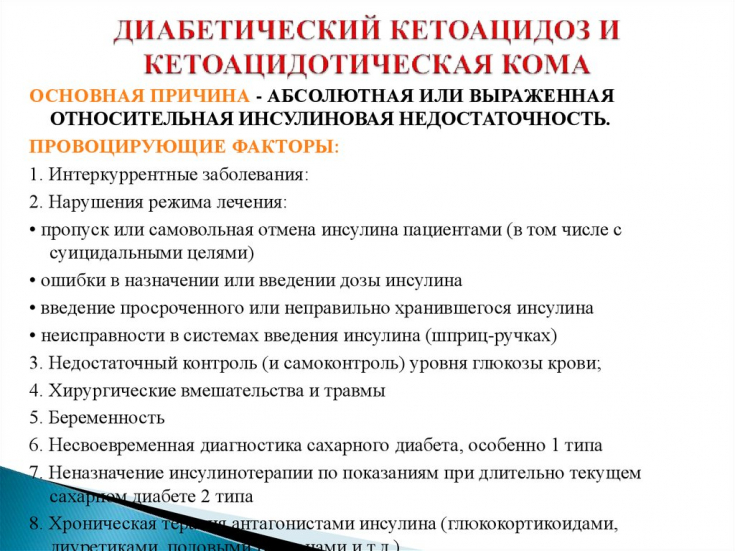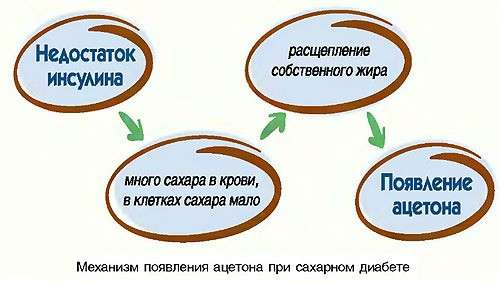– a complication of diabetes mellitus that can threaten the life of the patient. Diabetic acidosis most often occurs in patients who suffer from type 1 diabetes mellitus, but can also occur in severe type 2 diabetes. The most dangerous conditions in ketoacidosis are coma and cerebral edema. Learn in the article on estet-portal.com about the main approaches to the treatment of this pathology
and the correction of water-salt balance in ketoacidosis from the standpoint of evidence-based medicine.Diabetic ketoacidosis: correction of fluid deficiency
The principles of management of patients with diabetic ketoacidosis include such aspects as: adequate rehydration, correction of acid-base status, correction of hyperglycemia, correction of electrolyte levels.Follow us on
Instagram! Correction of fluid deficiency − one of the most important steps in the treatment of patients with diabetic ketoacidosis. Adequate rehydration therapy is aimed at replacing lost extra, intravascular fluids and electrolytes. The initial correction of fluid deficiency should be carried out with Ringer's solution or saline according to the following scheme:
1) 1-3 liters per hour;2) 1 liter for two hours;
3) 1 l over the next two hours;
4) 1 liter every 4 hours thereafter (duration depends on degree of dehydration).
Rehydration should be performed at a rate that ensures adequate heart rate, blood pressure, urine output, and mental status. With severe dehydration and the need to administer a large volume of fluid, it is necessary to use balanced solutions in which the concentration of electrolytes corresponds to their concentration in blood plasma. When the blood glucose level is reduced to 180 mg / dl, the use of isotonic sodium chloride solution is replaced by the introduction of a solution of 5-10% glucose and isotonic sodium chloride solution in a ratio of 1: 1.
The hormone melatonin may increase the risk of diabetes
Insulin therapy should be started no earlier than one hour after the start of rehydration therapy, since the use of insulin preparations against a background of severe water deficiency is associated with a poor prognosis. The International Society for the Study of Diabetes in Children and Adolescents (ISPAD & minus; International Society for Pediatric and Adolescent Diabetes) recommends rehydration with saline sodium chloride in terms of 10-20 ml / kg in the first 1-2 hours in order to prevent the development of cerebral edema, after which insulin therapy should be started. In this case, the total volume of fluid administered in the first 4 hours should not exceed 40-50 ml / kg.
Monitoring of clinical and laboratory data during the entire period of treatment of a patient with diabetic ketoacidosis helps to prevent the development of potentially fatal complications such as severe hypoglycemia, hyponatremia and hypokalemia.Principles of insulin therapy for diabetic ketoacidosis
The advantage of a low dose insulin regimen is that it does not lead to severe hypoglycemia or hypokalemia (which can occur with high dose insulin). Short-acting insulin is used to correct hyperglycemia. Due to dehydration due to diabetic ketoacidosis, subcutaneous absorption of insulin is usually reduced, therefore the route of administration of the drug − intravenous.
 Insulin starting dose is 0.1 U/kg/hour. A solution containing 24 units of insulin in 60 ml of isotonic sodium chloride solution is administered continuously at a rate of 15 ml/h (6 U/h) until a glucose level of 180 mg/dl is reached. In the future, the infusion rate is reduced to 5-7.5 ml / h (2-3 IU / h) until hyperglycemia is eliminated. In the absence of an infusion pump, large volumes of solutions can be used while maintaining the rate of insulin administration (for example, 60 units of insulin in 500 ml of isotonic sodium chloride solution at a rate of 50 ml / h).
Insulin starting dose is 0.1 U/kg/hour. A solution containing 24 units of insulin in 60 ml of isotonic sodium chloride solution is administered continuously at a rate of 15 ml/h (6 U/h) until a glucose level of 180 mg/dl is reached. In the future, the infusion rate is reduced to 5-7.5 ml / h (2-3 IU / h) until hyperglycemia is eliminated. In the absence of an infusion pump, large volumes of solutions can be used while maintaining the rate of insulin administration (for example, 60 units of insulin in 500 ml of isotonic sodium chloride solution at a rate of 50 ml / h).
However, it should be remembered that the correction of hyperglycemia is accompanied by an increase in insulin sensitivity, which can lead to hypoglycemia. The optimal rate of glycemic reduction is 100 mg/dL/hour. Glucose levels should not fall below 200 mg/dl during the first 4-5 hours of treatment. cerebral edema.
Advanced Treatments for Diabetes Mellitus
Treatment of electrolyte levels in diabetic ketoacidosis If the serum potassium level exceeds 6 mEq/l, potassium solutions should not be used. If the potassium level is 4.5-6 meq/l, it is necessary to inject a solution of potassium chloride at a rate of 10 meq/h. If the potassium level is 3-4.5 meq/l, potassium chloride solution is used at a rate of 20 meq/h.
Potassium chloride solution is used by adding to the intravenous rehydration solution. It is necessary to monitor the level of potassium per hour. The infusion of potassium chloride solution should be discontinued when the serum potassium level reaches 5 mEq/L. In the future, it is necessary to continue monitoring potassium to prevent recurrence of hypokalemia.
Correction of acid-base balance in diabetic ketoacidosis
Sodium bicarbonate solution is used only if decompensated acidosis threatens the life of the patient (against the background of sepsis, lactic acidosis). If there are indications for the use of sodium bicarbonate solution, it is administered in a volume of 100-150 ml and a concentration of 1.4%. If necessary, the infusion can be repeated every half hour. The use of bicarbonate, like insulin, leads to a decrease in the level of potassium in the blood.
Neuropathic ulcer as a complication of diabetes
Therapeutic Strategies for the Development of Insulin Analogs







Add a comment